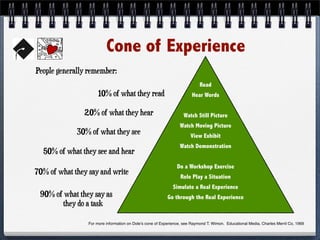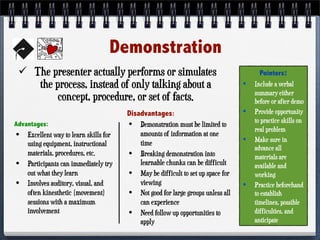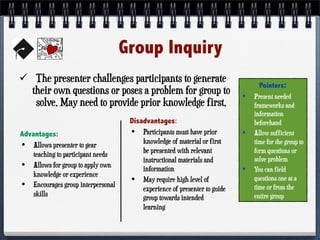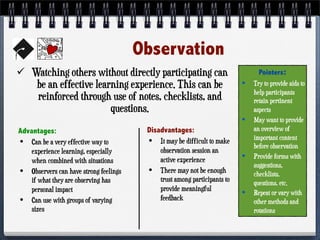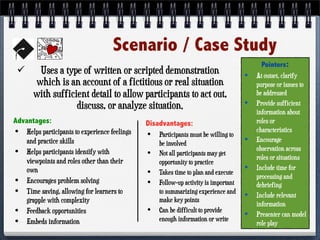The document discusses various teaching methods and their advantages and disadvantages, including demonstrations, group inquiry, guided learning, and scenarios. Each method is evaluated based on its effectiveness, participant involvement, and requirements for prior knowledge. Strategies and pointers are provided for optimizing learning experiences and ensuring participant engagement.
